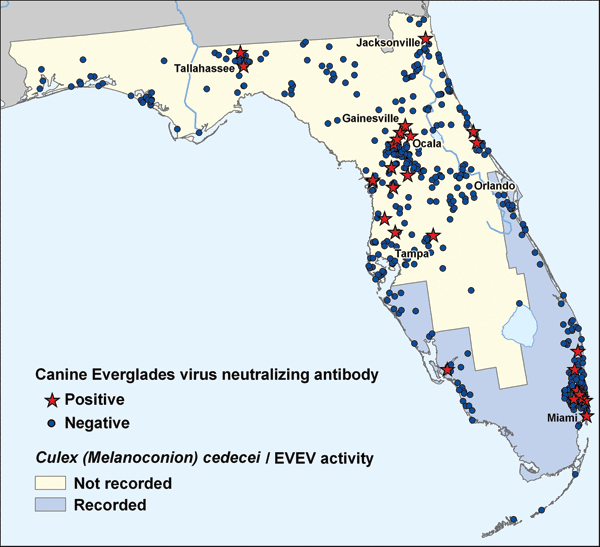Volume 12, Number 12—December 2006
Research
Serologic Evidence of Widespread Everglades Virus Activity in Dogs, Florida
Figure 1

Figure 1. Everglades virus–seropositive and -seronegative dogs in Florida, 2003–2004. A total of 633 samples of dog sera from the Veterinary Medical Center in Gainesville or Hollywood Animal Hospital in Miami were screened. Each blue dot (seronegative) or red star (seropositive) represents a single dog. Most of the seropositive dogs lived in north-central Florida, outside the recorded range of the principal vector Culex (Melanoconion) cedecei or previously recorded Everglades virus activity (purple shading). Owners of dogs living outside the endemic region reported that their animal had not traveled to south Florida.
Page created: October 04, 2011
Page updated: October 04, 2011
Page reviewed: October 04, 2011
The conclusions, findings, and opinions expressed by authors contributing to this journal do not necessarily reflect the official position of the U.S. Department of Health and Human Services, the Public Health Service, the Centers for Disease Control and Prevention, or the authors' affiliated institutions. Use of trade names is for identification only and does not imply endorsement by any of the groups named above.